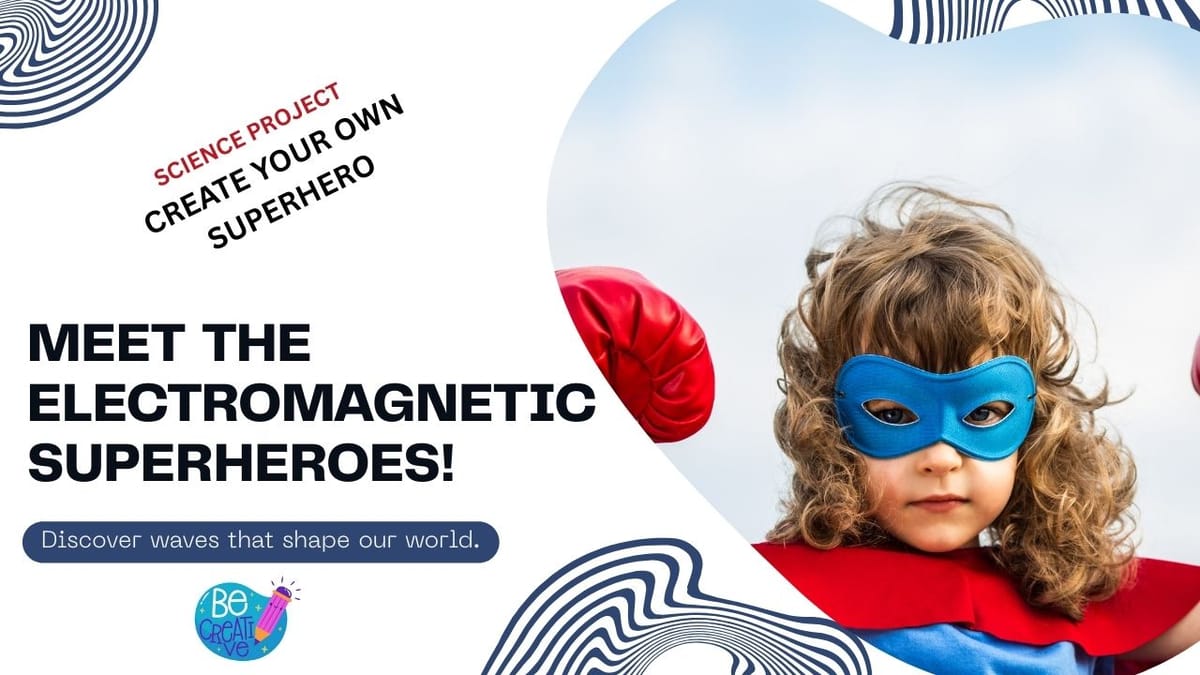Designing a Superhero Science Project with ChatGPT: A Step-by-Step Journey
This post documents how I used ChatGPT to co-create the entire project, from the first brainstorm to the final rubric. It’s a behind-the-scenes look at how teachers can use AI as a powerful planning partner.

Designing a Superhero Science Project with ChatGPT: A Step-by-Step Journey
Support Why EdifyAs the school year winds down, I wanted to give my 8th-grade science students a fun and creative way to demonstrate their understanding of the electromagnetic spectrum. I had a loose idea: a superhero project where each student creates a character based on one type of electromagnetic wave. But I needed help turning the idea into a polished, standards-aligned, engaging experience, so I turned to ChatGPT.
This post documents how I used ChatGPT to co-create the entire project, from the first brainstorm to the final rubric. It’s a behind-the-scenes look at how teachers can use AI as a powerful planning partner.
Step 1: Start with a Simple Prompt
I started by telling ChatGPT:
"I need a creative assignment for students to deepen their understanding of the electromagnetic spectrum during the last week of school."
ChatGPT responded with a list of rich, imaginative ideas, and one immediately stood out: Spectrum Superhero. Students would design a superhero whose powers were based on one type of EM wave. This aligned perfectly with my goals—engaging, student-centered, and grounded in science.
Step 2: Refine the Assignment Idea
Next, I asked for a detailed lesson plan based on the Spectrum Superhero concept. ChatGPT provided learning objectives, materials, step-by-step instructions, and assessment ideas. I could already see how this could come together in my classroom.
Step 3: Add Student Resources
I wanted students to work offline, so I asked:
"Can you create a student resource sheet that explains the EM spectrum in detail without needing internet access?"
ChatGPT created a beautifully organized reference guide with detailed facts about each type of electromagnetic wave, including wavelength, frequency, energy, uses, and fun facts. I later asked it to expand that same resource with three times the depth—and it delivered. I dropped it into a Google Doc and printed copies for students (see the bottom of the page).
Step 4: Engage with a Creative Hook
To launch the project, I asked ChatGPT to help me write a fun narrative introduction. Within seconds, I had a story about a cosmic event that turned EM waves into superheroes. The narrative gave the project a comic book feel and captured students’ imaginations.
Step 5: Provide Clear Directions and Planning Tools
I asked ChatGPT to write clear, student-facing directions. Then I followed up with:
"Can you create a student planning sheet?"
It generated a printable worksheet that walked students through research, character design, and connecting their superhero to real science.
Step 6: Assess with a Single Point Rubric
I wrapped up by asking for a simple, clear assessment tool:
"Create a single-point rubric that can be used to assess student work."
ChatGPT generated a rubric that was focused, flexible, and easy to use. I added it to the back of the planning packet.
Final Thoughts: AI as a Teaching Partner
This experience reminded me that AI isn’t about replacing our creativity—it’s about amplifying it. ChatGPT helped me take a rough idea and develop it into a complete, engaging learning experience. It saved me time, offered structure, and sparked ideas I wouldn’t have thought of alone.
If you’re a teacher looking to build a project, write a unit, or design a resource, I highly recommend experimenting with ChatGPT. Start with a simple prompt, give feedback, and let the tool evolve the work with you. It’s like planning with an instructional coach who never gets tired.
A video I created to kick off the project with my students.
❤ Enjoy this Article?
🍵 Show Your Support and 🤗 Share It



